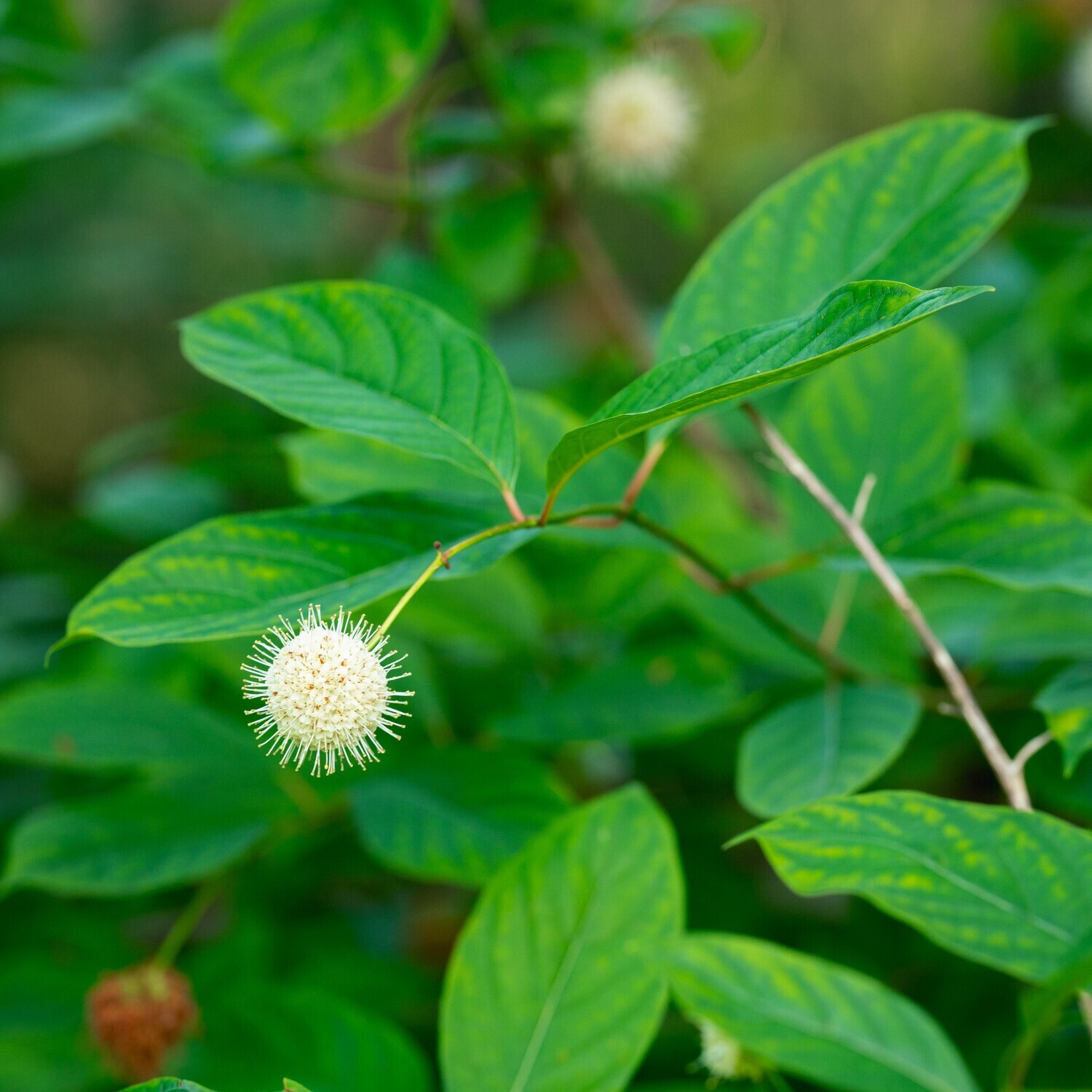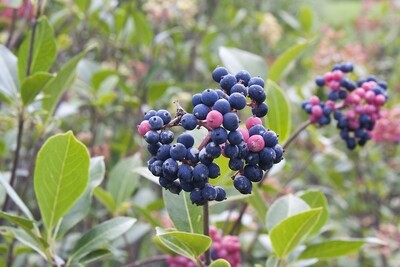Cephalanthus occidentalis - Buttonbush
Stunning globular, white flowers are enjoyed by a multitude of pollinators and have a honey-like fragrance. Very successful in riparian areas and can handle periods of standing water. It spreads via suckering to form thickets. Seeds are eaten by ducks and other water birds. Provides nesting habitat for songbirds and is deer resistant. Excellent choice for pond margins, wet areas or stream bank restoration. Intolerant of drought.
Height : 3-10 feet Spread : 3-6 feet
Light : Full sun to part shade Water : Medium to wet
Soil : Sand, loam, clay Zone : 4-8
Leaves : Glossy bright to dark green foliage that turns golden yellow in the fall
Stem : Gray-brown, not showy
Flower : Very fragrant, tiny creamy/white flowers. Blooms in July-August
Fruit : Flower heads turn to brown seed clusters/nutlets in the fall that persist through the winter
Habit : Rounded multi-stemmed shrub
Key Pollinators : Bumblebees, green sweat bees, yellow-faced bees, long-horned bees, large carpenter bees
Pollinator Food Source: Nectar
Larval Host Plant : Hydrangea sphinx moth, titan sphinx moth, royal walnut sphinx moth


